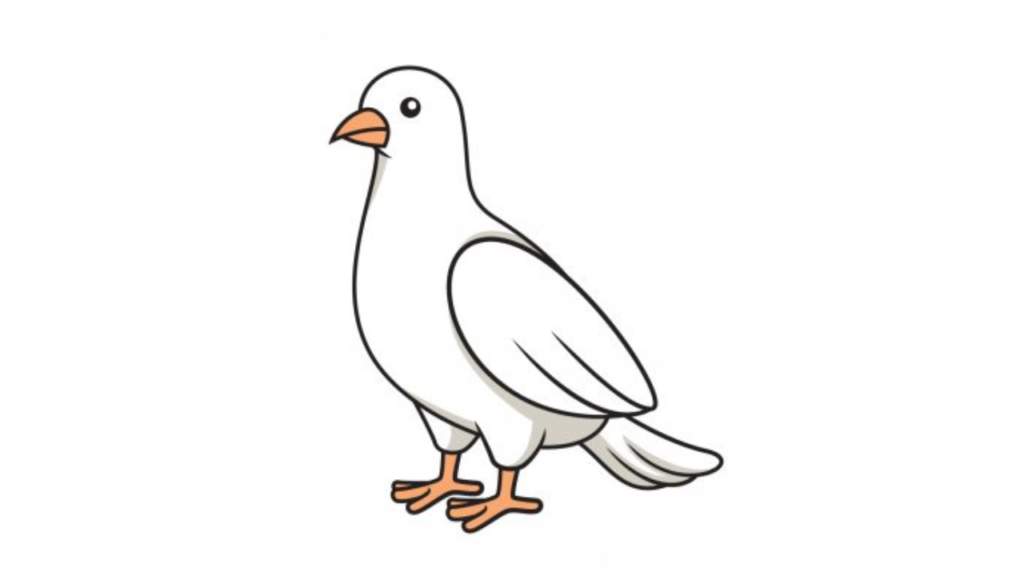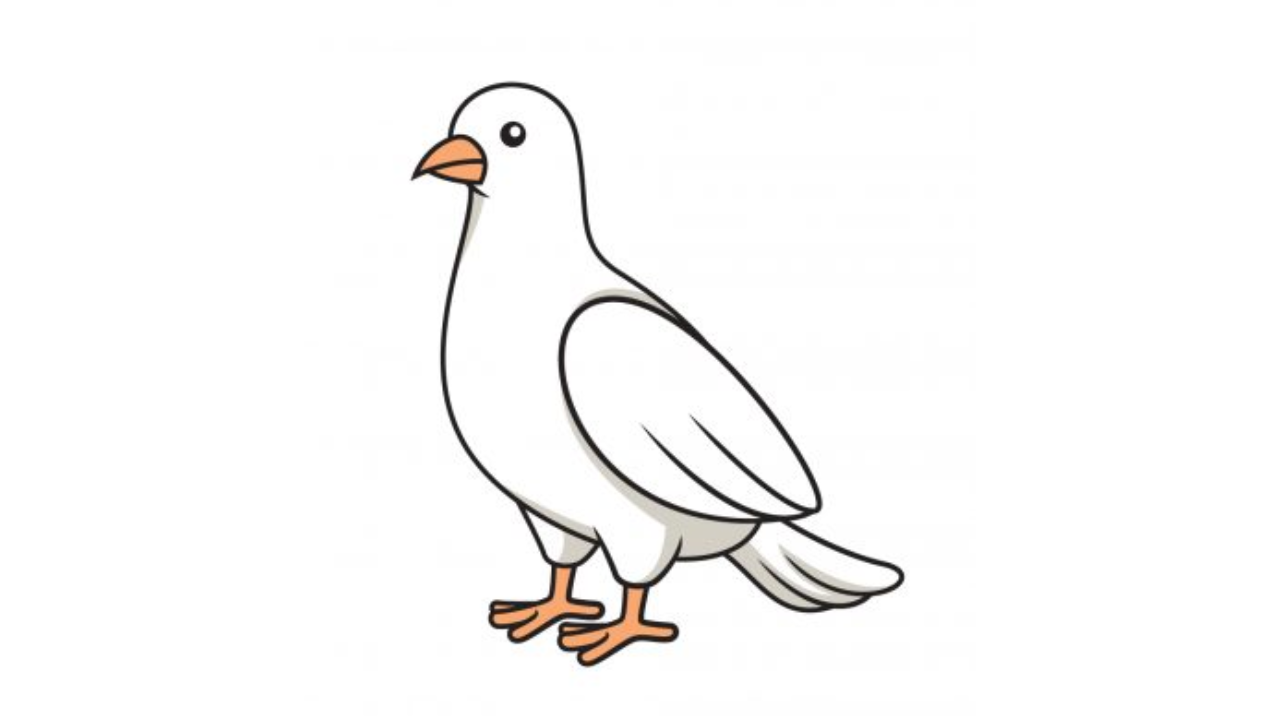Introduction:
Draw A Dove: Drawing is a superb type of imaginative articulation that permits people to catch the excellence of their general surroundings. The dove is a well-known subject in the drawing, frequently representing harmony, love, and trust. In this bit-by-bit guide, we will walk you through the most common way of drawing a pigeon, separating each stage to assist you with shockingly portraying this smooth dove.
Also, you may like this Turkey coloring page.

Materials You’ll Need:
Before we start, accumulate the accompanying materials:
Drawing Paper: Select a great paper that can use different drawing methods without tearing or smirching.
Pencils: Have a scope of pencils with various hardness levels, like H, HB, and B, to accomplish changing tones.
Eraser: A decent-quality eraser will assist you with revising slip-ups and making your drawing clean.
Sharpener: Save your pencils sharp for exact lines and concealing.
Reference Picture: Track down an unmistakable picture of a pigeon to reference all through the drawing system.
Stage 1: Essential Framework
Begin by delicately drawing the fundamental diagram of the dove. Start with a little oval shape for the head and a bigger oval for the body. These two ovals should marginally cover. Then, add a somewhat bent line reaching out from the body for the back and a different line for the tail. These lines will give your pigeon its underlying structure.
Stage 2: Wings and Tail Plumes
Doves are known for their rich wings and tail feathers. Add the wings by drawing two extended shapes on one or the other side of the body. The highest point of the wings should bend descending. The tail quills can be addressed by a fan-like plan of more modest lines toward the finish of the tail line.
Stage 3: Head and Snout
Refine the head by giving it more shape and aspect. Doves have little, round heads with delicate bends. Add an eye utilizing a little circle close to the front of the head. Just beneath the eye, draw a short, bent line for the mouth. The snout should be fragile and pointed, mirroring the dove’s trademark appearance.
Stage 4: Eyes and Subtleties
Presently, it centers around the dove’s eye. Attach a more modest circle to address the student inside the eye circle. Pass on a little white feature in the understudy to cause the eye to seem cheerful. Add a couple of quill-like lines around the eye to recommend the surface of the pigeon’s plumage.
Stage 5: Neck and Body
Interface the head and body with an elegant, bent line for the neck. Please focus on the extent; it isn’t excessively lengthy or short to ensure the neck. Refine the body by adding unobtrusive bends and lines to propose the dove’s delicate quills.
Stage 6: Feet and Branch
Pigeons have thin, sensitive feet. Define two short boundaries reaching out from the lower part of the body to address the legs. Add little, bent lines for the feet toward the finish of every leg. Draw a basic branch underneath the dove to make a characteristic creation, situating the feet as though they roosted on it.
Stage 7: Concealing and Surface
Concealing is significant for adding profundity and authenticity to your drawing. Begin by recognizing the heading of the light source. This will assist you with figuring out where the features and shadows should fall on the dove’s body. Utilize a scope of pencils, from H (difficult) for lighter regions to B (delicate) for more obscure regions.
Start by daintily concealing the whole body of the dove. Focus on the region where the body bends from the light, as these will be the shadowed segments. Utilize a mixing instrument or your finger to streamline the overshadowing and make consistent progress among light and shadow.
Then, add more characterized concealing to the wings and tail feathers. Utilize short, light strokes to copy the surface of the quills. Continue to allude to your reference picture to catch the mind-boggling subtleties.
Stage 8: Last Subtleties
This step centers around refining the subtleties of the dove’s elements. Add quill-like lines to the wings and tail plumes to improve their surface. Obscure the eye to make it more conspicuous, and add a little feature to the eye to make a shimmering impact.
Please focus on the mouth, refining its shape and adding unobtrusive concealing to give it an aspect. Add a couple of additional lines to propose the plumes around the eye and on the neck.
Stage 9: Foundation
Consider adding a straightforward foundation to supplement your dove drawing. You could make a delicate, concealed foundation different from the splendid, white pigeon. This will make the pigeon stick out and give your drawing a clean look.
Stage 10: Last Contacts
Make a stride back and assess your drawing. Are there any areas that need refinement? Are the extents exact? Make important acclimations to guarantee that your pigeon drawing looks adjusted and practical. Utilize your eraser to tidy up any wanderer lines or smears.
End:
Drawing a pigeon requires cautious perception and scrupulousness; however, with training and persistence, you can uniquely portray this image of harmony and trust. Recollect that craftsmanship is an excursion, and each stroke of the pencil carries you nearer to dominating your abilities. Continue investigating various strategies, concentrating on different references, and above all, partake during the time spent making craftsmanship that addresses you and the individuals who respect your work. For more information, please Visit Here!

